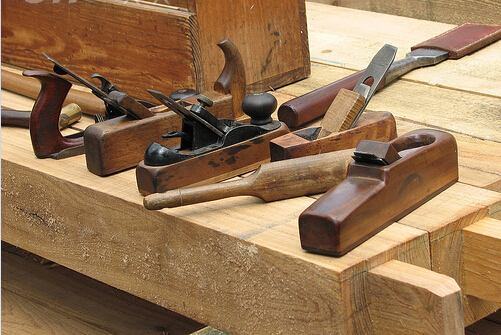
The woodworking industry uses abrasives at all levels of manufacture, from initial product to fine finishing, painting, and polishing. All types of woods, both softwood and hardwood need abrasives to polish them up.
The woodworking industry uses abrasives at all levels of manufacture, from initial product to fine finishing, painting, and polishing. All types of woods, both softwood and hardwood, layered woods, and even tough fiber compositions of wood and pulp mixtures (fiberboards) need abrasives to polish them up.

The types of abrasives used vary by level of industry:
• Industrial manufacturers use abrasives that fit on machines.
• General contractors and professional woodworkers use abrasives with portable sanding tools.
• Do-it-yourselfers generally sand by hand.
Bulk abrasives supplies and the tools to use them can be found through B2B e-commerce platforms like iAbrasive.com.
Here are the ways in which abrasives contribute to building quality products at each of these levels.
Industrial Abrasives
The main class of abrasives used in industry are wide belt sanders. These are installed on computerized woodworking machines used to make wall panels, moldings, doors, floorboards, cabinets, store fixtures, furniture, even some musical instruments.
Belts are composed of a thin layer of aluminum oxide (sometimes silicon carbide or ceramic) bonded by layers of adhesive to a durable cloth or heavy paper backing. They come in different grades, sizes and lengths. Wider belts are use for broad wood facings, narrower ones for sanding edges. Some have a butt joint and are bidirectional. Flap brushes, sanding wheels, and slashed assemblies are used for grain pop and defuzzing.
Pump sleeves wrapped around pneumatic drum sanders shape irregular pieces like contoured chair and table components. These expand or contract to produce a hard or soft contact roll, depending on how much air is put into the drum (like a bladder).
Once the majority of sanding is done on a piece, oscillating orbital plant sanders remove cross grain scratches for a finer finish. These finishing abrasives are sometimes made of emery, flint, or garnet. Hand sanding takes care of areas difficult to reach by machine.
Abrasives for Portable Tools
Portable tools, used by most specialty woodworkers - like fine cabinet and furniture makers - include electric or air powered sanders and buffers, and the straight-shaft die grinder.
Abrasives that fit electric sanders are round or rectangular discs with holes that whisk away sawdust. These discs are generally made from aluminum oxide or ceramic glued onto cloth, film, or heavy paper. Some abrasives suppliers sell self-stick discs, which can come in rolls of up to 175 discs. There are also hook-it discs with a hook-n-loop backing, used with a backup pad.
Die grinder abrasives are small drums of different sizes made of sandpaper mounted on an arbor. The more powerful die grinders remove excess bulk from a piece. The smaller die grinder (rotary tool) engraves wood, or shapes and polishes areas that are difficult to reach. A radial bristle disc is used similarly.
Buffers look like small-sized sanders, but are used for final polishing. The abrasive that forms them is a rough cloth, foam, or wool. They are often used with a polish of some kind to make the wood surface smooth and shiny. Some polishes themselves contain tiny abrasive materials that can be applied with a dual-pad rubbing machine to create lacquered surfaces.
Hand Sanding
The final finish process for nearly all applications is hand sanding. With aluminum oxide or silicon carbide as the sanding agent, hand sanding abrasives come in the form of coated foam sponges or pads, abrasive paper sheets of different grits, and utility cloth sheets.
Some come in rolls sized to fit special sanding blocks, similar to scotch tape dispensers. Others are hand pads that use hook-it discs. Specialty woodcarvers use sanding kits with four 1/4"x6" sanding sticks and matching grades of skinny abrasive belts.
EDA Online provides market insight to vertical markets in the United States. Their database of over 26,000 buyers of woodworking products shows that sanders (abrasives) are among the ten most popular equipment purchases in the woodworking industry.
This provides a wealth of opportunity for B2B abrasives suppliers and buyers specializing in woodworking abrasives and sanding tools. Online B2B e-commerce platforms, like iAbrasive.com, in turn provide a way for buyers and sellers to find each other. Bulk abrasives supplies and the tools to use them for woodworking can all be found for sale and purchase on this site.